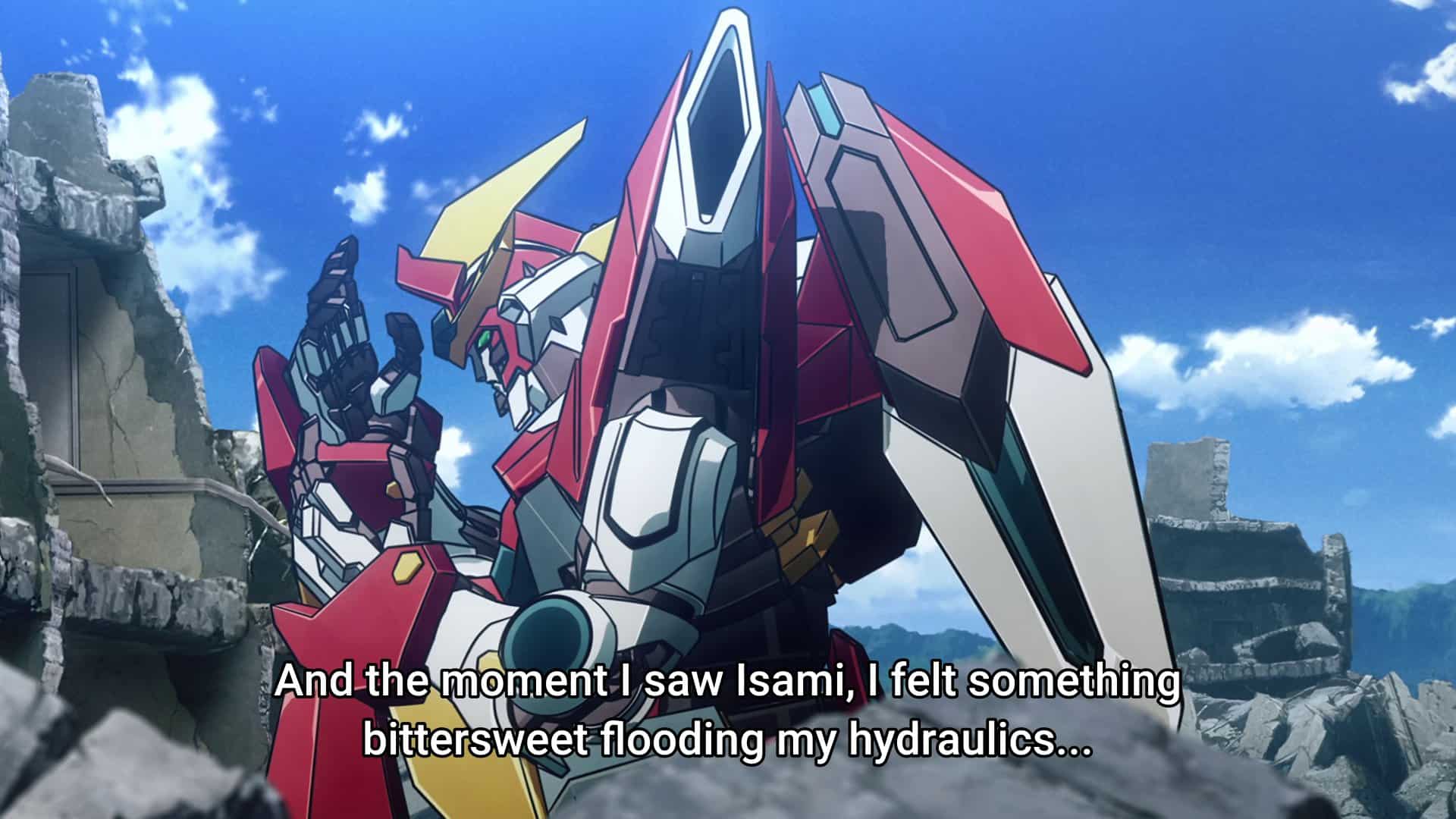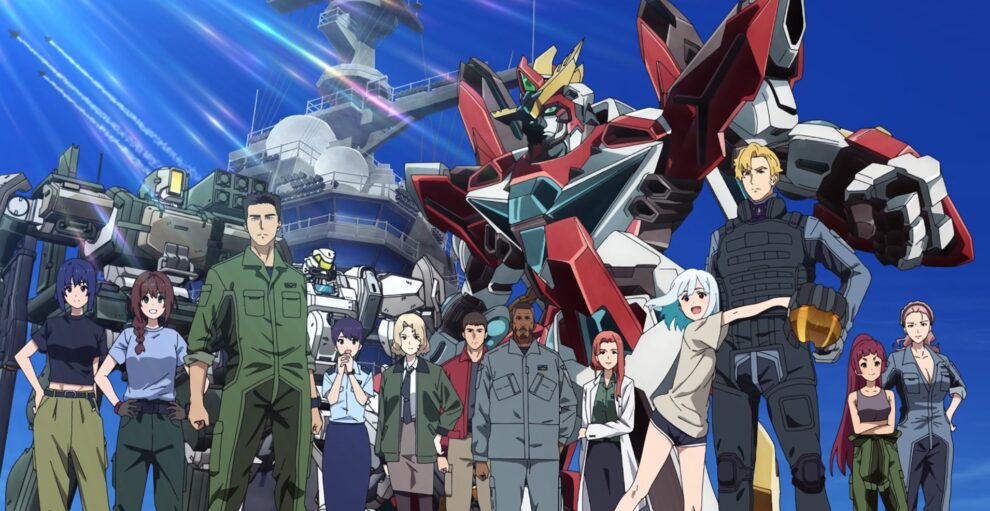Two of the best new trends we have seen in anime lately is the emergence of original series, as in not based on manga, with titles like “BNA” and a combination of parodying/homage to the style of titles (or even genres) of the past as in series like “One Punch Man” and “Mob Psycho 100”. “Bang Brave Bang Bravern” manages to combine both, this time functioning as an homage/parody of mecha titles.
Watch This Title on Crunchyroll
by clicking on the image below

Lewis Smith and Isami Ao are two professional soldiers who meet each other in Oahu, Hawaii during joint American-Japanese military exercises under AD-RIMPAC. During one of the exercises, a mysterious enemy invades the island and starts wreaking havoc, with the Earth forces and particularly the mechas not being able to even pose a threat. When all hope seems lost, a mysterious talking robot named Bravern appears and asks Isami to pilot him into battle, revealing that the invaders are “Deathdrives”, super robots who rely on the power of humans to pilot them. Isami agrees and essentially without much help from him, manages to destroy the enemies. It turns out, however, the Brave, is actually a grandiose buffoon who loves Isami as much as himself.
Furthermore, when he manages to destroy Superbia, another Deathdrive whom Brave seems to know, the latter ejects a young woman named Lulu, who, despite not being able to speak any Earth language, finds herself attached to Lewis, who is eventually compelled to take care of her. As time passes, the girl develops both physically and mentally, learning to speak, eat, and walk. At the same time, though, it seems that Deathdrives have attacked locations all over Earth, causing utter destruction, with the joint military force eventually deciding to go and free Japan. Their task, however, is not exactly easy and the forces of good do not remain unscathed in the war.

Evidently, and in probably the most entertaining aspect of the series, “Bang Brave Bang Bravern” mocks almost every cliche of the mecha category, with the majority of parody being reserved for “Evangelion”. The concept of the reluctant pilot of a living mecha maybe one of the most common of the genre, but here it is presented in hilarious fashion, with Brave stating repeatedly that he loves Isami, and that he is the only one who can pilot him, in a way filled with sexual implication about all kinds of penetration that are bound to make anyone laugh. The whole concept of the cockpit and how it is filled with liquid on occasion also points towards the same direction, as the fact that the mechas will not accept anyone as their pilot, but the way they throw up the ones they deny is equally funny.
This approach also extends to the way the enemy mechas appear and function, where instead of angels they have names of sins occasionally in Latin as in Cupiditas and Pessimism, and actually act in a suiting buffoonery. Apart from Evangelion, the double repetition of the half-episode clip and the transforming of the mechas definitely points towards anime of the category from the past, with the retro element working quite nicely here. Lastly, both the artform and the transformations of the mechas have a distinct “Gurren Lagann” feeling, along with a slight Gundam one, concluding the homage aspect of the series.
During the last part of the series, after the first tragic event, Masami Obari somewhat loses his sense of measure, particularly in the way the story is presented, with the time-traveling part being unnecessary convoluted, even if all the aforementioned elements are here once more, dulling the issue to a point. At the same time, the battles in this segment do get truly majestic, with all the elements that make “Bang Brave Bang Bravern” excellent finding their zenith, including the impressive animation by Cygames Pictures.
Koichi Motomura's character design is definitely above average, with the coloring of the protagonists also working in its favor. Some fanservice winks in the way the women are presented are expectedly here, although the whole thing is definitely tasteful. Where the anime truly thrives though, is in the presentation of the mechas, with the amount of intricacy and detail they are drawn being truly impressive to watch, actually extending to even the secondary ones and not only the heroes and their foes. Their diversity is also outstanding, while Bravern and his transformations are a true spectacle, even when humor is part of the design. Lastly that the mechas also have facial expressions is another amusing element, that cements the particular type of entertainment the title offers.
As a triumph of bromance, buffoonery, homage and parody at the same time, “Bang Brave Bang Bravern” is a truly unique anime and one of the most entertaining titles we have seen for quite some time















